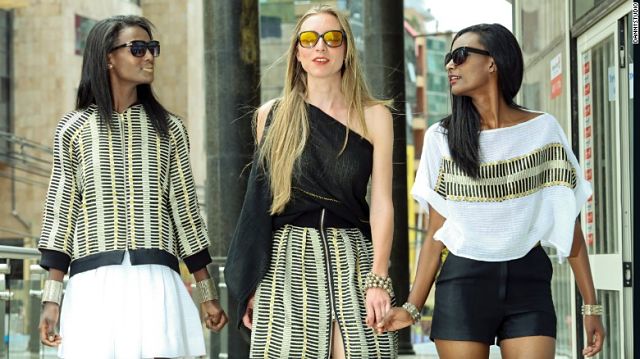 Mahlet Afework is one designer that has successfully incorporated Ethiopian fabrics into her designs. (CNN)
Mahlet Afework is one designer that has successfully incorporated Ethiopian fabrics into her designs. (CNN)
By Pete Kowalczyk
Chencha, Ethiopia — At first glance, Chencha, Ethiopia — an isolated hamlet of bamboo houses situated 300 miles south of the capital of Addis Ababa — doesn’t look like it’s the center of anything. It certainly doesn’t look like a major player on the world’s fashion stage. But then, looks can be deceiving.
The town is home to the Dorze people — an ancient community of weaving specialists whose designs have reached catwalks as far afield as New York and Tokyo.
When Tsehynesh Tara, a weaver who originally hails from Chencha, sees pictures of her fabrics on the backs of supermodels, she gets giddy.
“When I first saw the photos I was so excited. I said: ‘Did I really make that? Did I make that fabric!?’” she recalls.
Tara is one of several weavers employed by Addis-based fashion designer Mahlet Afework. The 27-year-old designer employs female weavers from Ethiopia’s rural areas. In return, weavers teach her about the history of her country and the meaning behind its fabrics.
“Every season I try to tell these stories with my collections — I try to learn more about Ethiopia and its beautiful culture,” says Afework.
“It’s where we come from, it’s in our blood.”
Mahlet Afework started her career as a model and rap artist before shifting to fashion. Self-taught via Google and YouTube videos, she’s gone on to collaborate with cult UK designer Markus Lupfer and has exhibited at London college of fashion. In a TED talk last year she told a global audience that Ethiopian fashion is not just about paying homage to its ancestors — it can actually lift women out of poverty. “In Ethiopia we have more than 500 underemployed female weavers in each village. We have a responsibility to give them a job — and then show their work to the world.”
—
Join the conversation on Twitter and Facebook.

























